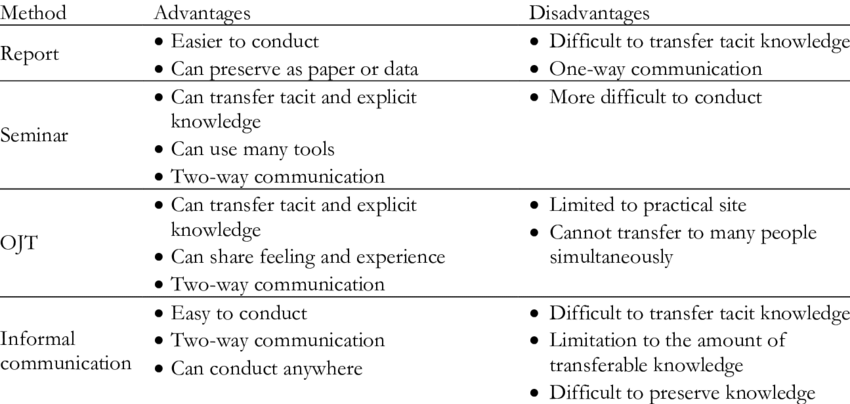On-the-job training, also known as OJT, is a form of training that occurs in the workplace while an employee is performing their job duties. OJT is a popular method of training because it allows employees to learn and practice new skills in a real-world setting, rather than in a simulated environment. There are several advantages to OJT that make it a valuable method of training for both employees and employers.
One of the biggest advantages of OJT is that it allows employees to learn while they work. This means that they can immediately apply what they have learned to their job tasks, rather than having to wait until after the training is complete. This can increase productivity and efficiency, as employees are able to complete their tasks more effectively and with fewer mistakes.
OJT also allows employees to learn at their own pace. While some employees may pick up new skills quickly, others may need more time to master them. With OJT, employees can take the time they need to fully understand and integrate new skills into their work, rather than feeling rushed or overwhelmed.
Another advantage of OJT is that it can be tailored to the specific needs and goals of the employee and the organization. Rather than a one-size-fits-all approach, OJT can be customized to address the specific skills and knowledge that an employee needs to succeed in their role. This can lead to more effective training and better outcomes for both the employee and the organization.
OJT can also be cost-effective for employers. Rather than paying for off-site training or hiring a trainer, OJT allows employees to learn on the job, using their regular work time and resources. This can save the organization money and reduce the amount of time employees spend away from their work duties.
Finally, OJT can help to build a positive culture within an organization. By investing in the training and development of their employees, employers demonstrate that they value their staff and are committed to helping them grow and succeed in their roles. This can lead to increased employee engagement and loyalty, which can in turn lead to higher retention rates and overall success for the organization.
In conclusion, OJT offers numerous advantages for both employees and employers. It allows employees to learn and practice new skills in a real-world setting, at their own pace, and tailored to their specific needs and goals. It can be cost-effective for employers and help to build a positive culture within the organization. Overall, OJT is a valuable method of training that can lead to improved productivity, efficiency, and success for both employees and employers.
What is the advantage and disadvantage of OJT?

Thus, this method utilizes short films, footages, video clippings, PowerPoint presentations and so on. One intriguing fact to note, however, is that various terms are used across the globe for on the job training for students e. They get a chance to visit the courts and attend the proceedings which is an essential experience for a law student. You might end up wasting your time as well as the time of the trainee at the cost of your project. On the Job and Off the Job Training: On the job off the job training, both of these employee packages are rigorously utilized by at least 90% of the globally placed companies which has, in turn, made these practices a hot cake amidst the interview appearing candidates and through this article, we are going to look out the merits and demerits of this particular method of employee assessment has. In the professional world where there is near zero tolerance for mistakes and ineptitude, OJT and internship is perhaps one of the very few practices that allow the trainees to learn from their mistakes, without jeopardizing their career prospects. Pros and Cons of On the Job Training: Advantages or Benefits of OJT Disadvantages of On the Job Training Methods The simple method of learning Teaching is a skill that everyone does not possess An economical way of learning It is a rushed process Get the feel right Low productivity Immediate productivity Creates Disturbance Quick learning Accidents can happen Advantages or Benefits of OJT: It is said that practical knowledge is more effective than the theoretical one as it gives you the feel of the process and system hands-on.
On the Job Training

It gives students the first real taste of work without throwing them into the deep end straight away. Here employees are trained mainly using a theoretical approach unlike on the job training. The two sectors operate on different planes, as theory and practice often do not meet at eye level. The decision about what employee training and development strategy to take is usually dependent upon the funding or budget available for training. As nouns, the difference between disadvantage and advantage is that disadvantage is a weakness or undesirable characteristic; a con while the advantage is any condition, circumstance, opportunity, or means, particularly favorable to success, or any desired end.
The Value of On
+OJT+methods+Advantages.jpg)
It discusses the definition, types, and benefits of on the job training. What can you learn from OJT? While other types of training can be less stressful for an employee, on the job training can get an employee ready for the job faster than any other method. The feedback helps them learn more about their strengths and weaknesses, embrace their mistakes, and gain relevant skills from distinguished professionals in the industry. Always present yourself in a manner that demonstrates the utmost professionalism and respect for authority. Training 2023 Offers 13 Unique Certificate Programs Build your skills and boost your career by attending a Training Magazine Certificate Program in Orlando. And she would like to thank the professors of the Mindanao State University for conducting this kind of program that help the students experienced things in the real world. Formal on-the-job-training programs have declared certain learning objectives or an extent of knowledge, skills, or abilities that will be reached by learners at the end of the training.
Top 11 Advantages and Disadvantages of On

What are the benefits of an OJT degree? Organizations continue to evolve, adopting new practices and setting new work goals. This is primarily because such students possess excellent soft skills, have exemplary work habits, and demonstrate higher industry and technical skills. This simply means that the transition from education to the labor market is particularly difficult immediately after graduation. Make sure to set no foot wrong as regards drug use, dress code, and other rules as outlined in the workplace. Moreover, on the job training helps trainees master professional skills such as teamwork, time management, communication, and adaptability. Companies can also organize some special training for professional employers like motivational training, risk analysis and resolution, These trainings are mutually beneficial to both company and employees.






+OJT+methods+Advantages.jpg)


